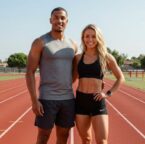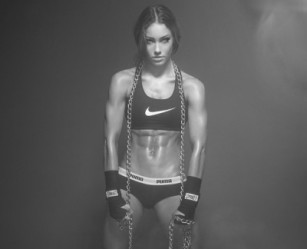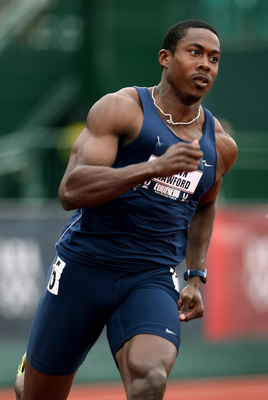You want a body that doesn’t just look the part under perfect lighting, but one that can actually go. Sprint, jump, hit, lift, and keep moving when everyone else has already tapped out. That’s the target here.
This isn’t about fake tan and flexing on a stage. It’s about building something lean, powerful, and ready for whatever you throw at it. Strength, speed, endurance, and the kind of athletic muscle that looks good because it performs.
If that’s what you’re chasing, you’re exactly where you need to be.
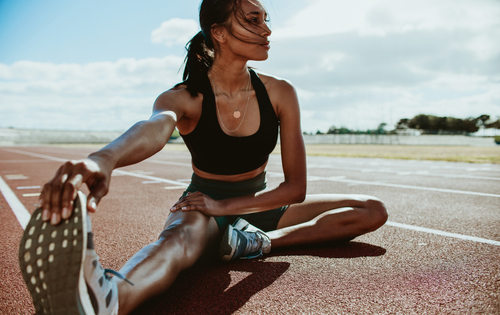
What is an Athletic Body?
You know it when you see it, lean muscle, low body fat, and the kind of movement that makes people think “yep, that guy could run through me if he wanted.” It’s not just about size. It’s about strength, speed, endurance, agility, and the ability to put all of it together when it counts.
This is not a bodybuilder look. The biggest dude in the gym might crush curls all day, but that doesn’t mean he can sprint 40 yards without gasping for air. An athletic body is built to perform first and look good as a side effect.
Train for it, and you’ll move better, hit harder, last longer, and still turn heads when you walk into a room. That’s the difference.
Build Athletic Strength
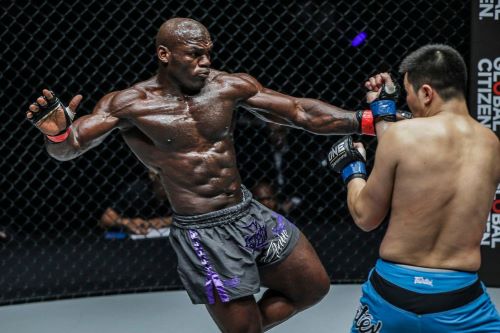
Looking athletic isn’t enough, you have to back it up. That means training like someone who needs their body to actually perform. Forget endless isolation moves. You need big, compound lifts that light up multiple muscle groups at once and teach your body to move as a unit.
Think squats, deadlifts, pull-ups, rows, and push-ups. Heavy weight some days, lighter and faster on others, that’s how you get strong and explosive instead of strong and slow. Train each muscle group twice a week, keep at least a day between hitting the same muscles, and always keep your core tight and powerful. A weak core is a weak athlete.
Here’s the short list of go-to moves:
- Back Squats
- Trap Bar Deadlifts
- Bench Press
- Pull-Ups
- Rows
- Cleans
- Bulgarian Split Squats
- Plank variations
Build your program around these, and you’re going to get strong in all the ways that matter.
Related: How To Look Like An Athlete
Related: How To Build Athletic Muscle
Related The Dynamic Effort Method For Increased Power
Build Explosive Power
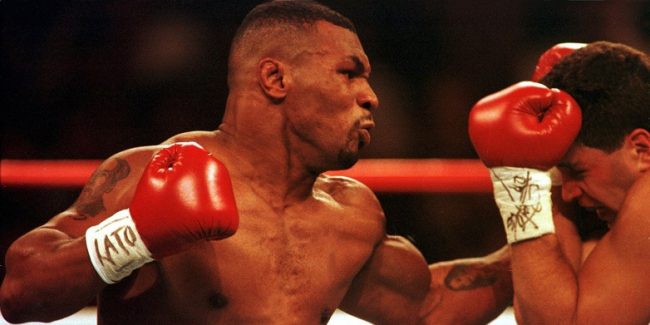
Strength is the foundation, but power is what makes you dangerous. Power is strength unleashed fast, the difference between just moving weight and launching it. It’s what gets you off the line quicker, higher in the air, and past your opponent before they know what happened.
Two of the best ways to build it: plyometrics and med ball throws.
Plyometrics
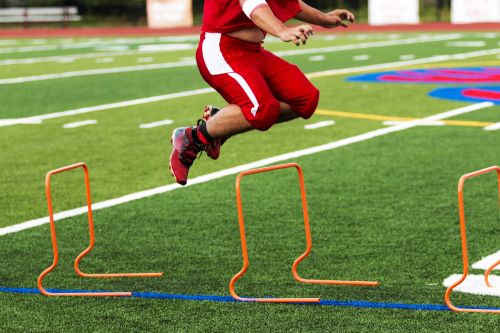
Plyo work trains your muscles to store and release energy like a coiled spring. The movement pattern is simple: load up, then explode. This develops the fast-twitch fibers that give you that “pop” in every step, jump, or change of direction.
Stick to quality over quantity. We’re talking box jumps, broad jumps, depth jumps, and lateral bounds. Keep the reps low, 3 to 6 per set, and go in fresh so every jump is crisp. Rest long enough between sets to give each rep maximum effort. If your landings start getting sloppy, you’re done for the day.
Med Ball Throws

This is power training you can feel in your bones. Med ball work is basically a full-body, high-speed assault on gravity. Overhead slams, rotational throws, and chest passes all train you to generate force and transfer it through your body efficiently.
The key is intent; throw like you’re trying to put a hole in the wall, not like you’re tossing a beach ball. Keep your form tight so the force travels through your whole body, not just your arms. Do these early in your workout when you’re fresh and can give them maximum speed.
Mixing plyos and med ball work into your week will make you more explosive in every sport and every lift. Strength moves the weight, power moves you.
See our article The 7 Best Med Ball Tosses for Explosive Power for more details on med ball throws.
Build Speed
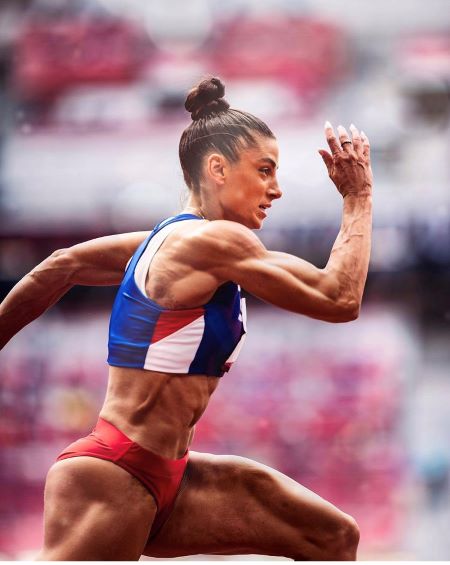
You can be strong and explosive, but if you’re slow, you’re still getting beat. Speed is the athletic equalizer. It makes you harder to defend, harder to catch, and harder to stop.
Speed training isn’t just about running fast, it’s about training your body to apply force into the ground quicker and more efficiently. The good news? There are a few proven ways to get faster that don’t require a track team or fancy gear.
Related: Best Workout for an Athletic Body and Performance According to AI
Lose Dead Weight
If you’re carrying extra body fat, you’re basically sprinting with a weighted vest 24/7.
Every unnecessary pound slows you down. Drop the fat, keep the muscle, and you’ll instantly feel lighter and quicker. That’s not bro-science, that’s physics.
Perform Sled Pulls for Acceleration
Acceleration is that first burst out of the gate, and sled pulls are one of the best ways to train it. Load the sled with 25–75% of your body weight, attach a harness or strap, and sprint for 10–20 yards.
Keep your body angle forward, pump your arms hard, and drive through your legs. Five sets with full recovery between them will light up your acceleration like nothing else.
Related: Heavy vs Light Sled Pulls for Sprint Acceleration
Do Sprint Work
You want to get faster? You need to sprint. Period. Sprinting develops your glutes, hamstrings, calves, and core while teaching your nervous system to fire at max output.
It also revs up your central nervous system so heavy lifts later in the session feel more powerful, this is called post-activation potentiation.
Try short sprints (20–50 yards) for acceleration, medium sprints (60–100 yards) for max velocity, and even uphill sprints to build power. Sprint days should have plenty of rest between efforts so every run is explosive, not half-gassed.
Related: 8 Reasons You Must Sprint for Your Physique
Mechanic Matter
Don’t just flail and hope for the best. Keep your head neutral, shoulders relaxed, and drive your knees up. Push the ground away behind you; speed comes from force into the ground, not just moving your legs faster.
If you combine these elements, lean body composition, powerful acceleration, max-effort sprints, and clean mechanics, your speed will climb fast. And once you’re faster, everything in sports gets easier
Increase Your Endurance
It’s one thing to be fast for a few seconds; it’s another to keep going when everyone else is gassed. Endurance is your ability to stay sharp, powerful, and effective deep into the game, match, or workout. Without it, all your strength and speed are useless after the first round.
You don’t need marathon-level cardio, but you should be able to handle sustained effort without falling apart. A solid endurance base lets you recover faster between plays, reps, and rounds, so you can go hard over and over.
The “Show and Go” Standard
If you want a body that shows and goes, you need enough conditioning to run at least a 5K without dying. You don’t have to be a runner, but you should be able to move your own body for distance when needed.
Interval Work (Fartlek Training)
This is simple but brutally effective: alternate bursts of high-speed work with recovery periods. For example, in a 30-minute jog, run hard for 1 minute, then slow to a recovery pace for 1 minute, and repeat.
It trains your heart and lungs to recover faster, just like in sports where you’re constantly speeding up and slowing down.
Tempo Runs
These are steady runs at a “comfortably hard” pace, not an all-out sprint, but not a jog either. Aim for at least 15–20 minutes, either on a track, treadmill, or outside. Tempo runs build your aerobic capacity and mental toughness at the same time.
Mix It Up
Endurance isn’t just running. You can build it with cycling, swimming, jump rope, rowing, shuttle runs, or even circuits that keep your heart rate up for extended periods. The key is keeping the effort consistent and challenging without turning it into a slow, lazy session.
Don’t Skip It
The guy who looks shredded but can’t last through a pickup game? Don’t be that guy. Endurance is what lets you use your strength, speed, and agility for the whole game, not just the first quarter.
If strength is your engine, endurance is your fuel tank. Build both, and you’ll be able to perform at a high level long after everyone else is cooked.
Get More Agile
Agility is what makes athleticism look smooth. It’s the ability to change direction, accelerate, decelerate, and react without losing balance or speed. You can be strong, fast, and well-conditioned, but if you move like a dump truck in a parking lot, you’re going to get smoked by someone who can cut and pivot on a dime.
Agility isn’t just about fancy ladder drills. It’s a mix of strength, balance, coordination, and awareness, all working together so you can explode in one direction, stop on a dime, and take off in another without wasting time or energy.
Keep It Short and Sharp
Agility drills should be done fresh, with max effort, and in short bursts. The goal is quality movement, not grinding through endless reps. Think quick, precise footwork with full recovery between sets.
The Basics Still Work
You don’t need exotic equipment to get more agile. These classics will sharpen your game fast:
-
Cone Slalom: Shuffle, cut, and change direction around cones as quickly as possible.
-
Lateral Bounds: Jump side to side, landing softly and under control.
-
Hurdle Jumps: Clear small hurdles or cones, moving laterally or forward.
-
Low Squat Lateral Hops: Stay in a squat position and hop over a line or cone.
React, Don’t Just Repeat
Sports don’t happen in a perfect pattern. Mix in reaction drills, have a partner call out directions, flash colors, or throw cues at random so you’re forced to adjust on the fly. This builds real-world agility, not just practice-speed moves.
Strength Supports Agility
Remember: your legs are the brakes and the engine. Strong quads, hamstrings, and glutes help you stop faster, push harder, and cut sharper. Keep your lower body strength work dialed in alongside agility drills.
Agility is the skill that lets you actually use your strength, speed, and endurance in real competition. Build it, and you’ll start feeling like you have an extra gear no one else can match.
Related: 3 Workouts to Improve Agility
The Athlete Diet

You can train like a monster, but if your diet is trash, you’re leaving half your results on the table. An athlete’s body isn’t just built in the gym, it’s built in the kitchen. The goal is simple: fuel performance, recover faster, and keep your body lean and powerful year-round.
Forget one-size-fits-all diets. The way you eat should match how you train. A sprinter and a marathoner have different fuel needs, but the core principles are the same: enough protein to repair muscle, enough carbs to keep the tank full, and the right fats to keep your hormones firing.
Protein for Athletes
Power athletes need protein like a race car needs fuel. If you want to build muscle and bounce back from brutal training sessions, you’ve got to feed those muscles, fast. Right after you finish, that’s prime time.
Blood flow is cranked up, muscle cells are ready to absorb nutrients, and your body is begging for recovery. Hit it with lean protein like egg whites, chicken breast, or turkey breast. If you can’t do it immediately, get a high-protein meal or snack in as soon as possible.
Endurance athletes don’t need to worry as much about fat unless they’re dialing in body composition. If you’re trying to lean out, go for healthy fats like avocado, nuts, or olive oil, but keep it in check. If you’re grinding out long, hard sessions every day, your glycogen stores are getting torched anyway; fat isn’t the priority.
Related: The Big 10: Ten Nutrition Rules for Athletes
Carbohydrates for Athletes
Athletes run on carbs. Without them, high-intensity training turns into a slow, painful grind, and you’ll hit the wall fast. For quick fuel, go with simple carbs like honey, syrup, or fruit, they’ll give you that instant energy spike your muscles are craving.
The best time to hit these is within 30 minutes after your workout, when your muscles are primed to soak up glucose like a sponge. If you need a little boost before training, grab a pre-workout snack with complex carbs about an hour beforehand for a steady energy release.
Endurance athletes should lean heavily on complex carbs like whole grains, vegetables, and fruit. These break down slowly, keeping blood sugar stable and fueling long efforts without the crash. Eating them 1–3 hours after training, or before bed, helps replenish glycogen stores and keeps energy levels smooth through the night. If post-workout timing isn’t possible, aim for a complex carb snack about an hour before your next big session.
Fat for Athletes
Most athletes don’t actually need a ton of fat in their diet unless they’re trying to drop weight or keep their body composition in check. In those cases, healthy unsaturated fats like avocado, nuts, and olive oil are the way to go.
They pack nutrients without loading you up on unnecessary calories. If you’re grinding through long, brutal training sessions every day, adding these fats 1–3 hours before your workout can help your body spare glycogen and tap into fat for fuel instead.
For endurance work, the same rules apply; fat isn’t a primary fuel unless you’re managing weight. Too much can slow digestion and leave you feeling heavy, so keep it in check.
Small amounts of healthy fats throughout the day work well, and if you’re training for hours at a time, having some before your session can keep your energy steady and prevent an early crash.
Fluids for Athletes
Power athletes need to drink lots of fluids because the more powerful their muscles are, the more sweat is produced as a by-product. This becomes especially important during long workouts where you’re breaking through your anaerobic threshold which means that you’ll be producing lactic acid faster than your body can break down. It’s best to drink fluids before, during and after these workouts to replenish the water lost through the lactic acid.
Endurance athletes also need to drink lots of fluids because without them their bodies would fatigue more quickly and they’d be more prone to injury. For this reason, it’s important to drink fluids before, during and after these longer workouts to keep muscles from cramping up.
The Best Supplements for Athletes
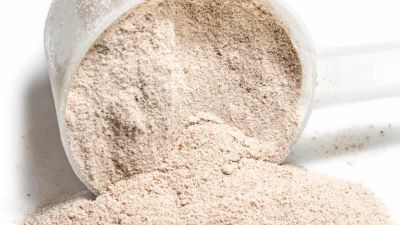
Supplements aren’t magic, but the right ones can give you a legit edge. They won’t replace hard training and solid nutrition, but they can help you recover faster, train harder, and squeeze out more performance.
Here are the only ones worth your time and money:
Creatine
The king of performance supplements. Creatine helps your muscles store more energy (ATP), so you can push harder for longer. It also pulls water into your muscle cells, improving strength, power, and recovery.
Five grams a day, every day, no fancy loading phase needed. Works for most people, but about 30% of the population won’t notice much from it. For the rest, it’s a game-changer.
Protein Supplements
Think of protein powder as convenience food for athletes. Whole food comes first, but a scoop of whey or a high-quality plant protein makes it easy to hit your daily protein goal without choking down another plate of chicken.
Great post-workout or when you’re in a hurry.
Creatine & Protein Work Together
Creatine and protein can actually work together to provide your muscles with a lot of benefits. Studies have shown that taking creatine and protein supplements together has been shown to increase muscle mass by as much as 10% compared to those who didn’t take any at all (1). There’s also evidence that taking creatine and protein can help to increase your lean muscle mass by 6-7% compared to the placebo (2).
Pre-Workout Supplements
A pre-workout supplement can provide a lot of benefits to those who are involved in strenuous workouts. These supplements contain ingredients such as caffeine and citrulline malate which have been shown to increase your energy levels so that you can train harder for longer periods of time. In fact, studies have shown that these two ingredients combined can increase your endurance by as much as 17% (3) which is the equivalent to running 2.8 extra miles!
Power athletes can benefit from pre-workout supplements because it will give them the energy they need to perform strenuous workouts for longer periods of time so that they gain more lean muscle mass and increased endurance.
Endurance athletes can benefit from pre-workout supplements because it will give them the energy they need to perform strenuous workouts for longer periods of time so that they can continue to train at peak performance levels for longer periods of time. By combining creatine with a pre-workout supplement, you’ll be able to continue to train as hard as you want for as long as you want, allowing your muscles to continue to grow and gain endurance at a faster rate.
That being said, many pre-workouts use too a lot of stimulants and it may be a bit much for some people, including me. Luckily there are some good stimulant-free pre-workout supplements out there that can give you the benefits without the side effects.
Athletes Need Rest
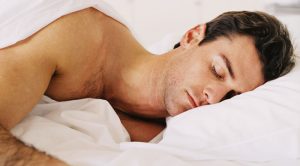
I get it, you want to train like an animal every single day. I used to think the same way, but here’s the truth: going all out non-stop is a fast track to burnout and stalled gains. I hit the gym 4–5 days a week, take one full rest day, and maybe do light cardio on another. This way I can crush my workouts and still give my body the time it needs to actually grow.
When you lift, you’re literally tearing muscle fibers apart. They only rebuild and get stronger when you rest. If you’re grinding every day without recovery, you’re just wearing yourself down, staying sore, and setting yourself up for injury. The same goes for sleep: if you’re not getting at least 8 hours a night, you’re leaving gains on the table.
And don’t forget your headspace. If you’re stressed, tired, and in a lousy mood, it’s going to show in the gym. A strong body needs a strong mind, so rest it just like you rest your muscles.
The Athlete Workout
The Athlete Workout
You’ve got the tools, now here’s how to put them together. This program hits every quality you need to build an athletic body, strength, power, speed, endurance, and agility, without turning you into a one-trick pony. It’s balanced, it’s tough, and it works if you stick to it.
Monday: Power + Speed
We start the week with explosive work while you’re fresh. Power work primes your nervous system, and sprints get your speed dialed in. Finish with some heavy upper-body lifts.
- Sprints – 5×50 yards (full recovery between runs)
- Med Ball Slams – 3×10
- Overhead Med Ball Toss – 3×10
- Bench Press – 3×6
- Pull-Ups – 3 sets of max reps
- Sled Pulls – 5×20-yard sprints
Tuesday: Lower Body Strength + Agility
Today is about building lower body horsepower and keeping your movement sharp.
- Lateral Jumps – 2–3×6–10
- Plyo Lunges – 2–3×4–10
- Trap Bar Deadlift – 3×6
- Bulgarian Split Squats – 3×10 per leg
- Rotational Landmine Press – 3×10
- Plank Variations – 3×40 seconds
Wednesday: Conditioning
A steady run builds your aerobic base so you recover faster between bursts.
-
Run 2–3 miles at a steady pace (or swap in cycling, rowing, or swimming)
Thursday: Rotational Power + Upper Strength
Rotational med ball throws train the core to transfer power, while upper body work builds pressing and pulling strength.
- Lateral Med Ball Throws – 3×8 per side
- Med Ball Chest Pass – 3×10
- Incline Dumbbell Press – 3×6–10
- Chin-Ups – 3 sets of max reps
- Renegade Rows – 3×10
- Heavy Sled Pulls – 5×15-yard sprints
Friday: Explosive Jumps + Lower Strength
Another lower-body day, but this time with a bigger focus on jump power.
- Band-Resisted Broad Jumps – 3×8
- Band-Resisted Lateral Jumps – 3×8 per side
- Trap Bar Deadlift – 3×10
- Single-Leg Romanian Deadlift – 3×10 per leg
- Goblet Squats – 3×12
- Seated Dead Bugs – 3×15
Saturday: Conditioning / Active Recovery
Keep the heart rate up but give the joints a break from pounding.
-
20–30 minutes of cardio of your choice (rower, bike, swim, sled pushes, jump rope)
Sunday: Rest
Full recovery. Sleep, eat well, and get ready to crush the next week.
If you run this program with the nutrition and recovery plan we covered earlier, you’re going to get faster, stronger, more explosive, and better conditioned, while building a body that looks like it’s ready for anything.
Let’s Wrap This Thing Up
You’ve got the blueprint now, strength, power, speed, endurance, agility, fuel, supplements, and recovery. Put it together, and you’re not just building a body that looks good in the mirror, you’re building a body that can perform anywhere, anytime.
The hard truth? None of this works if you just read it and move on. You’ve got to train, eat, and recover with intent, day after day. Do that, and you’ll start turning heads for the right reasons, not because you look strong, but because you are strong.
So stop overthinking, pick a starting point, and get to work. The only bad workout is the one you didn’t do.
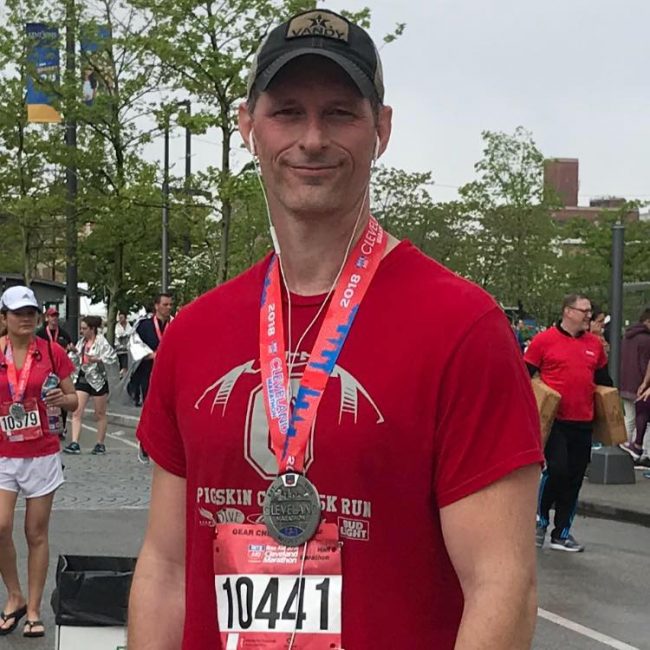
Ryan is a former college wrestler and lifelong fitness fanatic with over 25 years in the industry. He’s run half marathons, tackled mud runs, placed in body transformation contests, and coached everything from wrestling to girls’ soccer.
Along the way, he’s tested hundreds of supplements and built a deep well of supplement knowledge. His work has appeared in Muscle & Strength, Testosterone Junkie, The Sport Review, and more. Today, he’s the editor-in-chief of this site, still training hard and helping others reach their goals. Connect with him on LinkedIn below.




